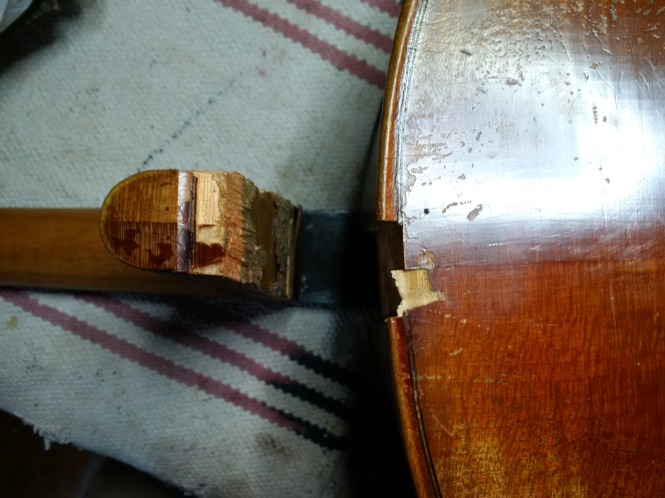
The latest restoration project: a cello that came into the shop in two pieces. The neck had separated from the instrument, taking the button with it, and it had a crack in the neck block… but it was still worth repairing. Now it’s back in playing order!

My first inspection of the break,

Seam separation
After the assessing the repair I began further disassembling the cello using warm water and a couple of sharp seam separation knives to remove the back plate from the rib structure. The instrument had some previously repaired cracks on the side which were already thoroughly cleated. The back came off with gentle persuasion and without any further damage to itself or the rib structure.
Unfortunately there were some original pieces of wood missing by the time the cello arrived- luckily I have a good supply of various types of maple so I was able to make something that matched and looked consistent with the rest of the cello. 
A view of the inside of the cello: I spot glued pieces of scrap wood to the blocks so that there would be no distortion to the rib structure while repairs were done to the back and neck of the instrument. I did some minor cleating and touch up to the rib structure while I had the instrument open, and I inspected previous repairs and any areas that might have become distorted or weakened over time.
With the back removed I made a partial cast from plaster, which worked as a clamp caul and support surface for the button as it was reattached to the back. 


A barrier of plexiglas, aluminum, and clay keep the plaster contained.

The finished casting


